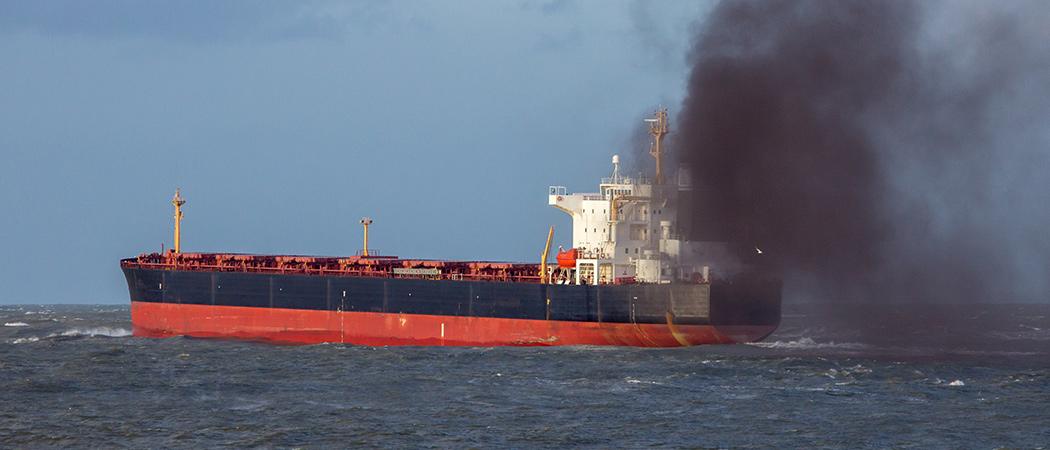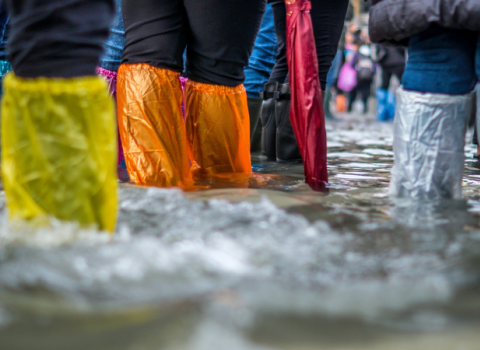Boats that pilot themselves could help the dirty shipping industry cut carbon emissions and overcome labour shortages. But first, there are lots of rocks to avoid and storms to face

In the gallery of climate rogues at the COP26 conference in Glasgow, ships got special notice: after all, the industry’s messy old diesel guzzlers produce 2% to 3% of global carbon emissions. But with the right technology, manpower and regulation, advocates say, shipping could actually be part of the world’s climate solution.
New vessels powered by renewables, with computers on the bridge, could form a global fleet of cleaner, cheaper transport that moves cargo off roads and onto canals, rivers and coastal ports. The EU’s Green Deal programme aims to shift 75% of inland road haulage to rail or waterways, with the European Commission saying that for each metric tonne transported, riverboats emit 83% less carbon dioxide per kilometre than lorries, and 50% less than trains.
The Commission’s plan for sustainable mobility would have freight transport on inland waterways and short-sea shipping – hopping from port to port - rise 25% by 2030 and 50% by 2050.
But first, a few basic problems must be resolved.
As things stand, these ambitions are impossible to achieve, said Louis-Robert Cool, CEO of Seafar, an Antwerp-based autonomous ship management and R&D company. “There are not enough people and not enough ships,” he said.
And today, the industry has a long way to go to establish its green credentials, as was highlighted at COP26, where 19 countries announced a plan for zero-emission shipping lanes.
The sector will take time to modernise because the typical lifetime of a diesel-powered ship is about 40 to 50 years, compared to five to ten years for a car, noted Marco Scholtens, programme manager at the Netherlands Forum for Smart Shipping.
But technology can help. Like a floating Tesla, an autonomous river barge or coastal ship could move goods more efficiently, and with fewer crew – overcoming a massive industry-wide labour shortage now hitting the industry.
And with the sector full of ageing diesel vessels, automation makes new ships a more attractive investment.
“When you build a new vessel and you build it for automation, you don’t need full crew accommodation,” said Cool. “With the same length of vessel, you can have more cargo space.” Those new vessels could be powered by batteries or hydrogen, rather than diesel.
Seafar currently works on retrofitting conventional boats with automatic systems, but will begin operating purpose-built autonomous vessels in 2022. By automatically adjusting speed for optimal fuel consumption, automation can make a diesel-powered ship about 10% more fuel-efficient.
Shortage of merchant sailors
Green or not, labour shortages mean moving more freight by water is easier said than done. Shipping
associations BIMCO and the International Chamber of Shipping predict a global shortage of merchant sailors in the near future, and say nearly 90,000 officers need to be hired by 2026 to maintain supply chains.
“The estimate we’re currently looking at is a 20%-30% crew shortage by 2030,” said Scholtens. He says the crew shortage is in part the result of changes in shipping that mean the life of a sailor isn’t the adventure it used to be. Cool meanwhile, points to social media reminding young sailors what they’re missing out on back home. And, some would add, the industry hardly has a great reputation for pay and working conditions.
In principle, automation allows ship’s crews to be replaced with onshore personnel in a control centre, monitoring several ships at a time. Seafar’s onshore staff work eight-hour shifts, which besides making hiring easier, also cuts the number of hours that need to be paid for compared to staffing a ship full time, potentially reducing the running costs of cargo shipping.
Ruling the waves
But first there are harbour masters to convince. Scholtens said that while a few countries, particularly Belgium, have regulations to support development and testing of autonomous shipping, it will be at least seven years and probably more before unmanned international shipping becomes a reality.
Besides a thicket of treaties, laws, regulations and technical guidelines that all presuppose a crew with a captain, there are also technical obstacles to replacing sailors with artificial intelligence, such as basic maintenance.
“Navigating a ship is not the only thing a crew member does,” said Scholtens. “There are other functions on board like maintenance repair, mooring, unmooring, cargo operations.”
Seafar today operates three unmanned barges, which typically run in convoy, with a fourth vessel that at least has a deckhand aboard. But these only run relatively short routes within Belgium, so onboard maintenance is less urgent, and the boats are small enough to be moored manually by a deckhand waiting at the quay.
The vessels also aren’t fully autonomous: they can follow a set route, but any unexpected obstacles require intervention by Seafar’s remote operators. Cool predicts that full automation will be technically possible within five years, but he expects it’ll take much longer for regulations to adapt to the new technology. That’s why Seafar’s unmanned vessels are for now limited to Belgium. “Flanders is state of the art in legislation and allowing smart shipping,” he said, but France and the Netherlands remain off-limits.
But Scholtens argues the timeline for what’s technically possible is bound-up with what’s legal, because companies are making “baby steps” while they wait for regulations to mature.
“There’s a great deal of legislation which is based on the availability of personnel on the ship […]. A lot of that has to do with the accountability,” he said. “The captain is responsible for safe navigation, and the crew shall at all times maintain a safe lookout. So there’s a lot of liability legislation which makes explicit reference to the crew.”
Having a nominal, remote captain working in an onshore control centre may simplify that problem a little, but it can also complicate questions of jurisdiction. “A ship might fly the flag of, for instance, the Netherlands. But your shore control centre is in the USA,” said Scholtens. “That shore control centre is under the jurisdiction of the United States, the ship is under the jurisdiction of the Netherlands. Good luck!”





 A unique international forum for public research organisations and companies to connect their external engagement with strategic interests around their R&D system.
A unique international forum for public research organisations and companies to connect their external engagement with strategic interests around their R&D system.